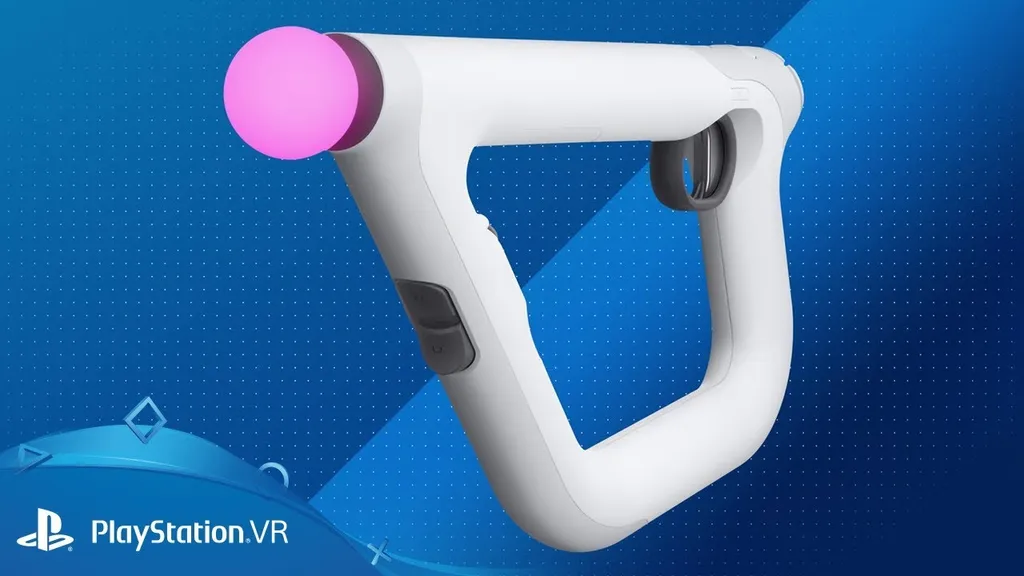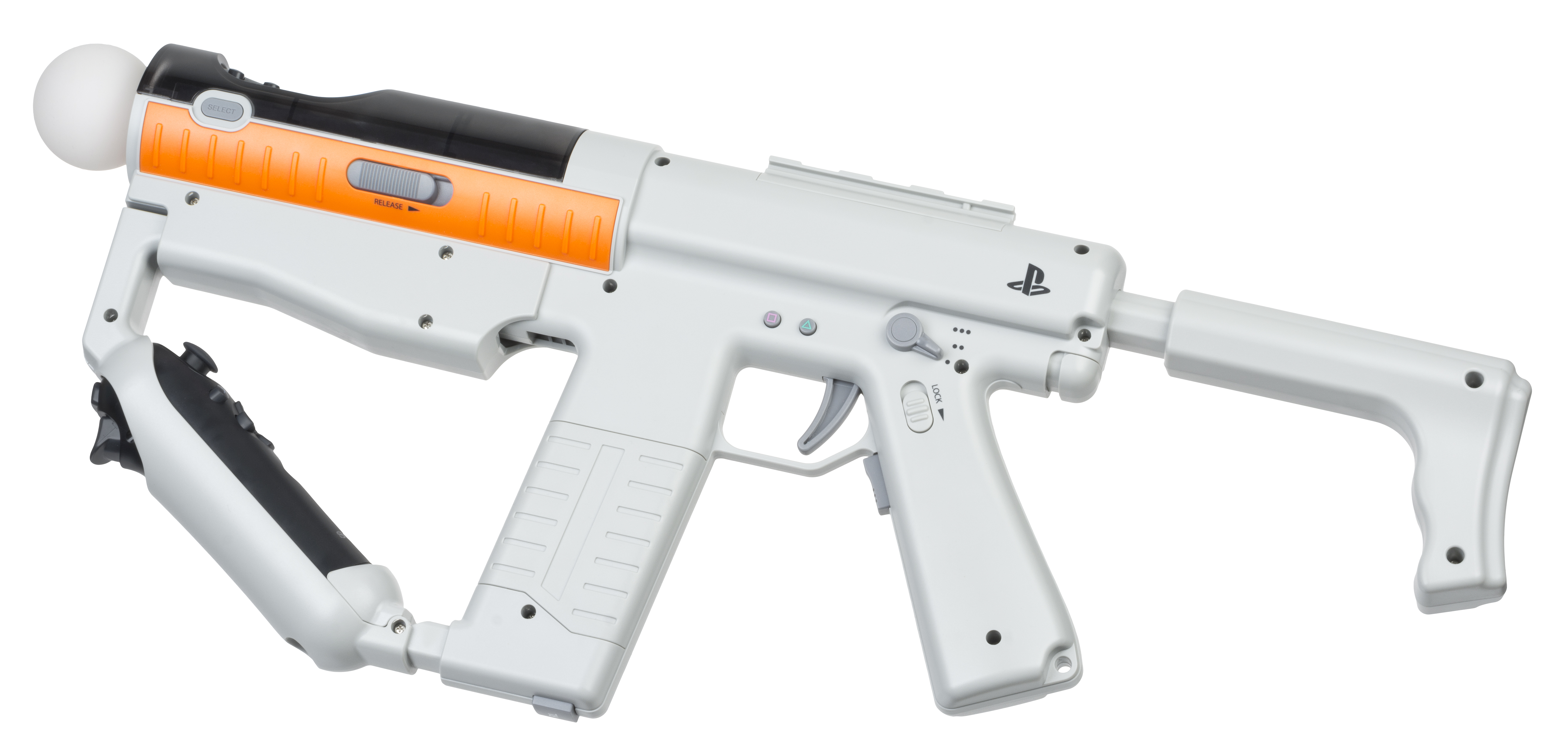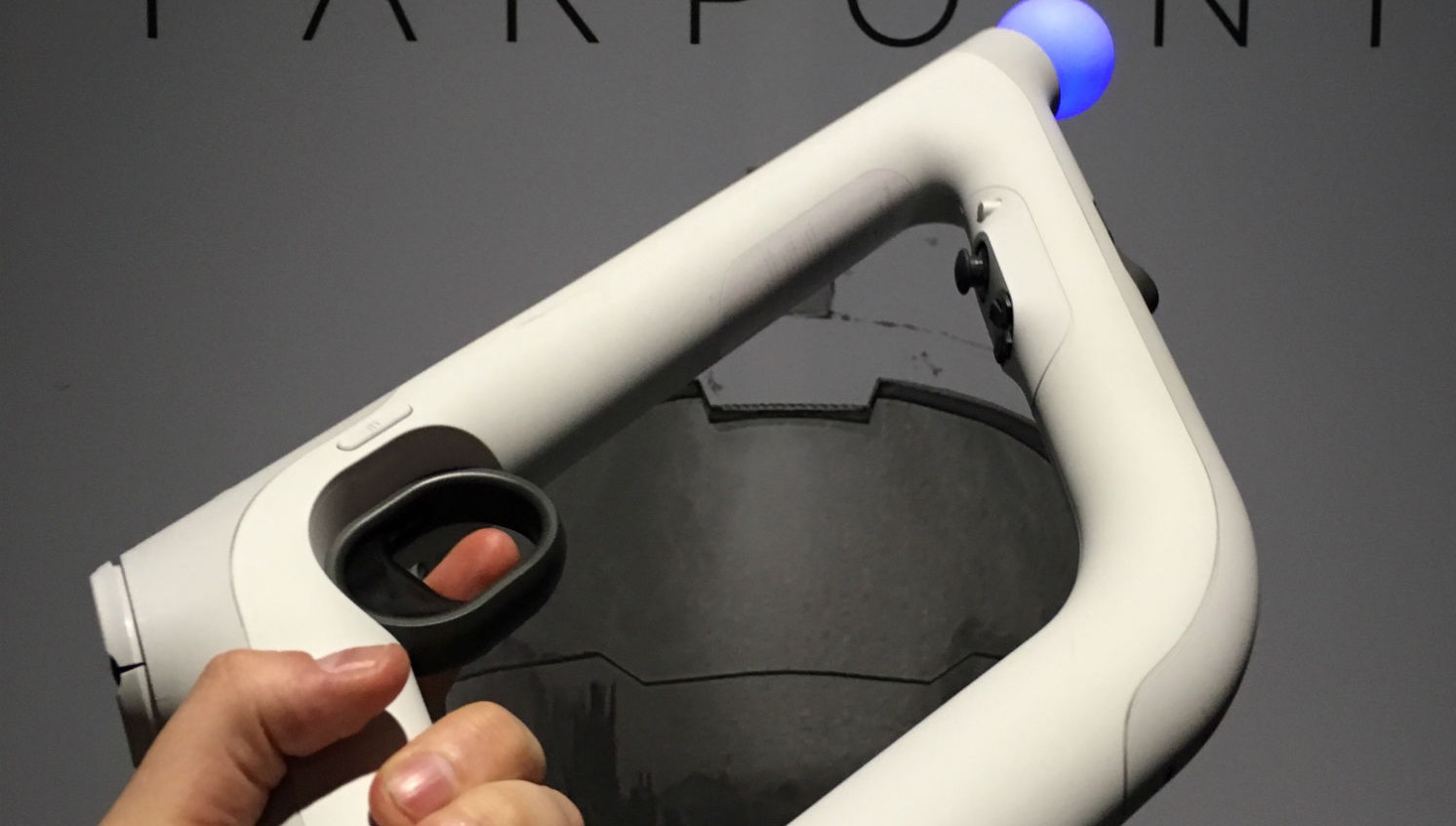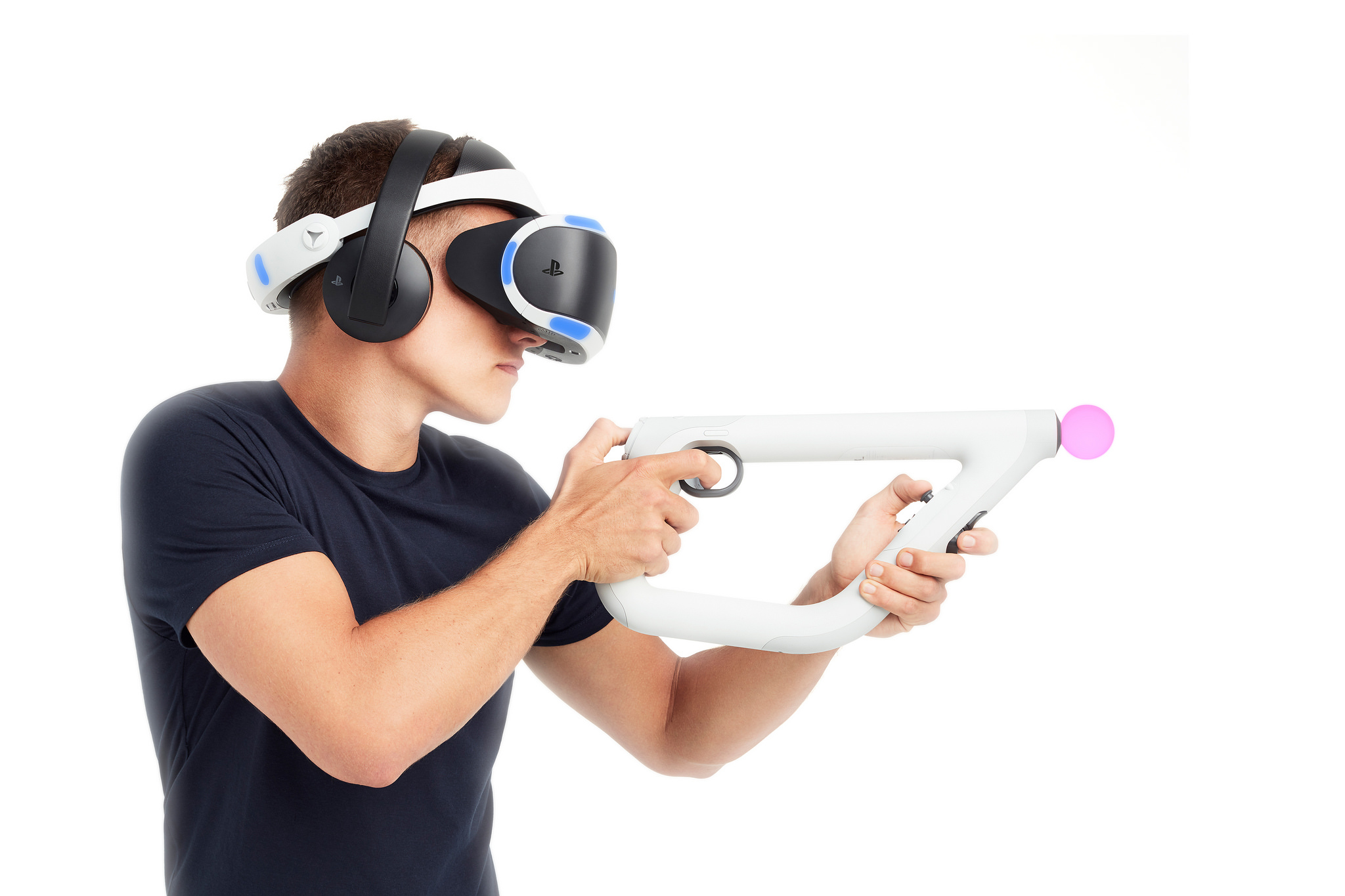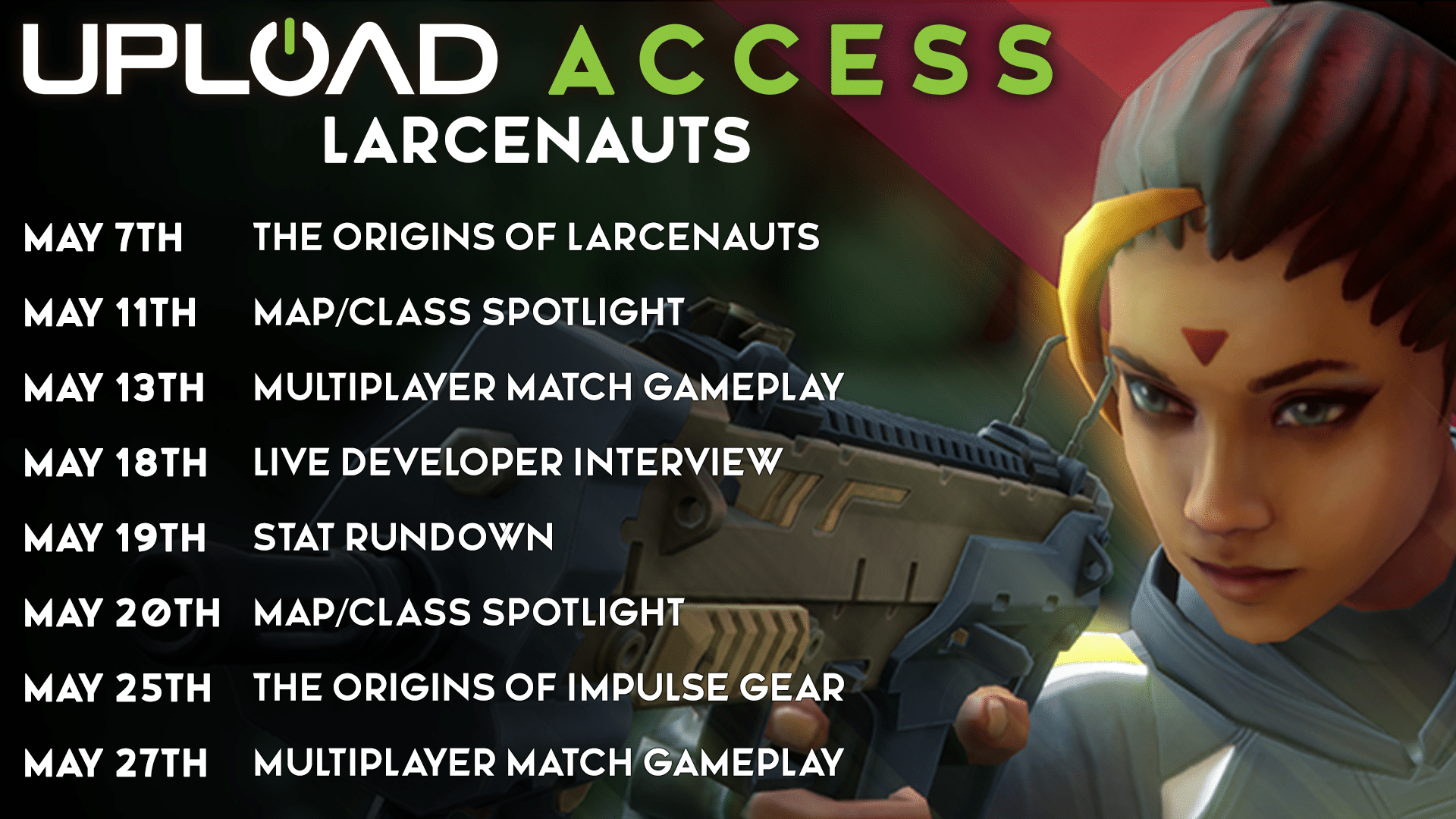Remember the first time you laid eyes on the PlayStation Aim Controller?
If you’re like me it was probably — quite literally — a lightbulb moment. The Move controller’s bright bubble stuck onto the end of a rifle-shaped device with dual-analog sticks for unprecedented VR shooter immersion. Brilliant! Another ace bit of engineering from Sony.
Or so we thought.
As it turns out, the Aim Controller wasn’t really the brainchild of PlayStation R&D. It was actually Impulse Gear, the San Francisco-based team behind controller launch title, Farpoint, that first came up with the concept and even the prototypes. And it wasn’t necessarily always intended for the PlayStation platform, either.
Missing Pieces
The Aim Controller’s origins, though, are intrinsically tied to the PlayStation brand. Seth Luisi, Impulse Gear co-founder and designer, is a Sony veteran that worked on some household names over his 18-year tenure. For much of that time, he oversaw the development of the SOCOM tactical shooter franchise, first at Zipper Interactive, then at Slant Six Games, and then back with Zipper in its final few years. He also worked on the fondly remembered PS3 shooter, MAG, which supported up to 256 players online.
“When VR came along,” Luisi tells me, “it really was a good opportunity to take everything I’ve learned about making an online shooter and making shooter games in general and then apply that to VR.”
Impulse Gear itself was established in late 2013, about six or so months before Sony revealed PlayStation VR under the codename Project Morpheus. But work on the headset had already been underway for years. Early R&D work dated back to 2010 and involved attaching the PlayStation Move controllers to a Sony-made head-mounted display for position-tracked head movements. Everyone “wanted to see if this could become the fabled VR that people have been talking about forever,” Luisi says.
Going back even further, though, Luisi worked on what you might consider the Aim Controller’s elder – the Move-compatible Sharp Shooter. This was a pretty nifty peripheral – you’d slot one Move into the top and the companion Navigation controller at the bottom as a grip. It even had a few features Aim owners would be envious of, like a plastic stock. Move was a position-tracked device but most compatible games — including SOCOM 4 — treated the kit more like a Wii, with simple aiming that really only required you to tilt the controller.
Luisi and the product teams at Sony wanted to do more. “One of the things we were looking at was, “How can we make that Sharp Shooter more than what it was?”” he says. “At the time you plugged the Move into it, similar to what we get with the Wii where it was just you were aiming a cursor around on the screen and that’s kind of what it was. It was just a virtual mouse, which wasn’t very interesting.”
So the team tried true 1:1 tracking. It added extra tracking sensors to its R&D prototypes, even if it was still limited to a TV screen that didn’t allow for the sense of space and depth that VR affords. “And it felt great, it instantly allowed you to acquire targets much more quickly, so rather than having to scroll a cursor round you could just aim at it, and that was much more intuitive,” Luisi says.
Other experiments included attaching a Move to a hat so that a user could wear it and tilt their head to turn the screen. “That’s kind of when it started to break down, because you’d have to look to the right but the screen’s over here so you’re looking sideways at the screen to see what’s going on,” he explained.
Essentially, Luisi and the team were building out great control mechanisms for VR at the turn of the decade. The only missing piece was, well, VR itself. In the early 10’s, when Sony’s experiments started to come together and Palmer Luckey revealed a prototype headset he’d made, things finally started to take shape. “Putting it all together was a big part of what Greg [Koreman, co-founder] and I did and that’s one of the main reasons we founded the company,” Luisi says.
Taking Aim
It was a while before VR headset makers would start to hone in on definitive control mechanisms, though. Sony hadn’t decided exactly what role the Move controllers would play in PSVR’s future and Oculus wouldn’t reveal its Touch controllers until after the reveal of the fully-tracked HTC Vive in 2015.
“Everything was just using Xbox controllers and regular controllers and we felt that you needed to have that tracked controller to go along with it to really sell that experience that really lives up to the expectations of what people were expecting for these types of games,” Luisi recalls of starting Impulse Gear.
If no one else was doing it, then the studio would have to take matters into its own hands. Koreman reveals that the team first got a tracked controller up and running on the Oculus Rift’s first development kit, DK1.
“That’s the magic,” Koreman says. “I think anyone that’s played with VR knows that as soon as you can interact with your world with your hands there’s something really special there. And that was the time we knew we needed to follow this. We needed to really explore what you can do with this. So it’s a really cool moment, and then you’re like “Oh, wait. There’s so much more we can do. We’ve got to make a company and make this happen.”
Eventually, the developer started showing its prototypes to others. Koreman says the device was comprised of modelling clay and elastic bands, and even had Move controllers stuck onto it for motion tracking. Then it had to run through a range of devices: “this is not hooked up to the PS4 at all,” Koreman says, “this is hooked up to the PS3, sending data packets over to the PC that we’re running a Rift DK2 I think at that time.
“So when we’re showing someone for the first time, they come into the room and they see this thing and they’re like “What am I actually looking at? What are you trying to show me? Because we had a collection of hardware there.”
Crucially, though, Impulse Gear found that when users put the headset on and picked up the prototype, that collection of hardware would just “melt away”, in Koreman’s words. All that was left was to turn the thing into a commercial product.
Impulse Gear spoke to different potential partners, but Luisi’s links to Sony held immediate advantages. “Sony was an obvious choice for many reasons, so working with them was a really great experience,” Koreman says. While HTC, Valve and Facebook have never released official new controller types for their platforms, Sony already had a precedent for this with the Sharp Shooter and other Move-based add-ons. Not to mention Move’s existing light-based tracking mechanism meant Impulse Gear wouldn’t have to worry about radical new designs.
The Aim Controller was eventually revealed alongside Farpoint at E3 2016, shortly before the launch of PSVR itself and just under a year away from the kit’s own release. For PSVR enthusiasts it quickly became a must-have; not only did the rifle shape drastically enhance immersion but the dual analog sticks made it more versatile for movement compared to the usual Moves. Plus it was supported by a range of great games like Arizona Sunshine, Firewall Zero Hour and, of course, Farpoint itself.
Designing Farpoint
As Koreman says Impulse Gear is a game developer first and foremost. Unusual as it was for a software team to develop a piece of hardware that went on to become a huge PSVR peripheral, it was all in service of the game that the studio originally wanted to make. “One of the other big important things, as Greg mentioned, was that we did want to create full, complete core games for core gamers,” Luisi says. “Because people– they want those types of experiences and that’s something we always strived to deliver when we’re working on these games – it has to be something that somebody is used to playing. A regular console gamer has a certain level of expectations for what that game should have and we want to make sure we’re delivering that in any game that we create.”
The ideas for Farpoint grew in tandem with the controller. “We knew from the start we wanted to make a game like Farpoint,” Koreman adds, “we didn’t have all the details sorted out but we had this core vision in mind of really what Farpoint came to be. It had a lot to do with the technology but it also had a lot to do with the type of game we wanted to make, the story we wanted to make, the experience we wanted people to have.”
The result was something pretty intriguing. Farpoint wasn’t a perfect shooter, but it had some really fascinating ideas on how to keep VR immersive, comfortable and convincing. As Luisi reveals, its levels don’t feature any 90 degree turns – you can play the entire game with 45 degree twists of your head rather than relying on a stick to artificially turn. Creepy spider enemies would pounce at you and, if they missed, scurry back in front to make sure you didn’t have to twist around. You could do these things, if you wanted to, but the game was intrinsically designed to never break the illusion – you never had to fight the hardware.
“You look at Farpoint and we learned so much,” Koreman says. “It was a really good experience. It was breaking new ground in virtual reality.”
Obviously Impulse Gear’s next game, Larcenauts, is very different from Farpoint. It’s a multiplayer-focused team shooter. It definitely looks promising, but could there be a future in Farpoint and Impulse Gear’s single-player roots?
“We definitely don’t have anything to announce at the moment but that is our roots and we’re very happy with what we did on Farpoint,” Koreman says. “And I think you look at that game and that universe and there’s absolutely a lot more to explore there. That being said I think what we have right now is a huge opportunity here to dive right into the multiplayer side of things and really look at everything we can do there.”
He later adds: “When we’re looking at how to move forward with Impulse Gear, we have a lot to explore in the shooter space as a whole.”

